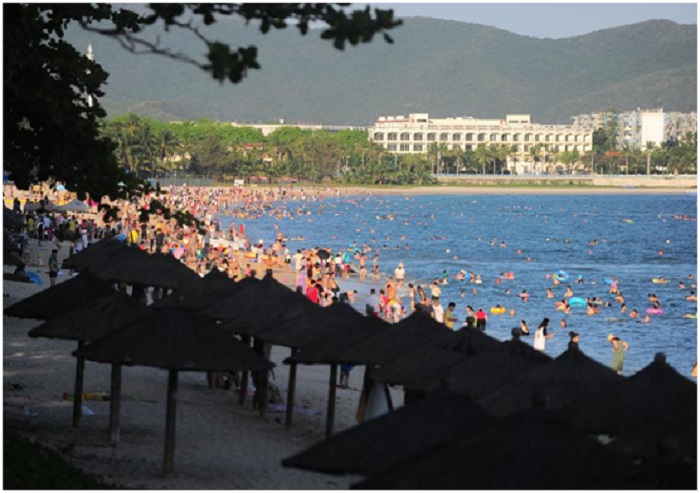



Duty-free shops in south China’s Hainan province shoveled in 32.7 billion yuan ($5.07 billion) over the last year, surging 127 percent from a year ago, thanks to the offshore duty-free policies newly introduced to the province on July 1, 2020. The figure accounted for 16 percent of the province’s total retail sales of consumer goods.
As of the end of the last year, daily duty-free sales of the province topped 120 million yuan, an increase of over 200 percent year on year, despite a nearly 20 percent drop in the number of tourists visiting the province know for its island charms.
Global consumption remained downbeat under the shadow of the COVID-19 pandemic, but the unprecedented dividends released by Hainan’s new offshore duty-free policies have been tempting enterprises with duty-free business qualifications.
Three duty-free shops opened in Sanya, the southernmost city of the island province before 2020 ended. So far, the province is home to 7 duty-free shops in operation, and 5 other enterprises have obtained licenses to run offshore duty-free business on the island, which broke the monopoly by the China Duty Free Group (CDFG).
The Haitang Bay Duty Free Shopping Center in Sanya, run by the CDFG, is the world’s largest duty-free complex. The CDFG was once a monopolist in the business until Hainan introduced offshore duty-free policies in 2011.
From July 1, 2020, Hainan implemented its new offshore duty-free policies. Meanwhile, according to relevant departments of the province, enterprises with duty-free business qualifications outside the province are encouraged to open offshore duty-free shops on the island.
A month later, local enterprises of Hainan, including Hainan Duty-free Co., Ltd., obtained licenses, and Shenzhen State-owned Dutyfree Commodity (Group) Co., Ltd. and other enterprises outside the province also weighed in.
“Usually it takes at least 8 to 10 months to prepare before opening a duty-free shop that covers over 10,000 square meters, but we only took 3 months,” said Chang Zhen, executive deputy general manager of China National Service Corporation for Chinese Personnel Working Abroad (CNSC), and executive director of board of CNSC Sanya International Duty Free Plaza.
The complex was flooded with nearly 15,000 tourists on Dec. 30, 2020, the day it officially started operation, which indicated the charm of offshore duty-free shopping.
“Offshore duty-free shopping policies have achieved great results so far,” said Ao Biqiang, deputy director of the Haikou customs. The policies brought back overseas consumption to China and promoted the new economic development paradigm of “dual circulation,” he continued.
At the CNSC Sanya International Duty Free Plaza, sightseeing and dining services are also provided for customers apart from shopping, presenting beautiful seaside views.
Such competitive differentiation is also adopted by the shopping complex of Hainan Duty-free Co., Ltd. “We introduced 37 international fashion and street wear shops on fifth floor to cater for the young people, and some commodities that had never entered the Chinese market are now presented to the customers duty-free,” said Xie Zhiyong, an executive of the duty-free shop.
Apart from running 5 duty-free shops, the CDFG is also preparing to build an international duty-free mall in Haikou, capital of Hainan province. With an investment of 12.86 billion yuan, it is expected to be the largest duty-free complex in China. It will include both duty-free and dutiable businesses, offices, hotels and apartments, and is scheduled to be opened in mid 2022.
The COVID-19 pandemic has cooled down the fever for overseas trips, but Chinese people’s passion for shopping tourism still remains, said Kuang Xianming, director of the economic research center at the China Institute for Reform and Development. He predicted that the offshore duty-free sales of Hainan province would keep an annual growth of over 20 percent in the next 5 years.


Cooperation between China and Nigeria had.



Nigerian government has urged trainees of.



Minister of State for Foreign Affairs,.


The Nigerian Government has congratulated the.


The Humanitarian Service Diamond Awards has.
A Chinese Company, Inner Galaxy Steel.


The Programme Coordinator, Regulatory, Compliance and.


A Non-Governmental Organization (NGO), Committee for.
The Trustfund Pensions Limited has chided.


The House of Representatives Committee on.
Leave a Comment